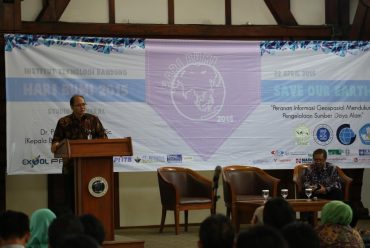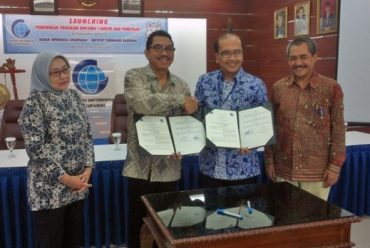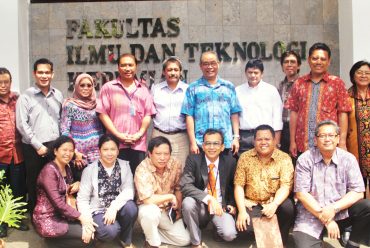Watering Damaged Infrastructure
A total of 50 weirs and 13 Dams on Java Island Less Functioning
The government seems to be immediately take strategic measures to overcome the effects of drought, especially related to food security. Because the majority of water infrastructure on the island of Java was broken, from the category of minor damage, moderate to severe.
From the research and the Research Centre for Water Resources Development and the Research and Development Department of Public Works is revealed, as many as 50 of the total 106 weir dam and 13 from a total of 47 dams on the island of Java were damaged. Most of the damage caused by operational maintenance of the building were inadequate and his old age of the building.
Head of Research and Development of Water Resources Colloquium Arie Moerwanto in Research and Development of Water Resources, on Thursday (24/7) in Bandung, detailing, as many as 27 dams were severely damaged, nine dams were damaged, and 14 others were slightly damaged. The 13 dams were damaged requiring further research and analysis to ensure operational capability and necessity of improvement.
In terms of irrigation, “dam” is a building that is used to raise the water level of the river until the required height for water to be channeled into irrigation canals and tertiary. While the “dam” is a building made to stem the flow of water.
Some of the weir on the island of Java were damaged, among others weir Cibanten, Cisangu, Katulampa, Rancasumur, and Cikeusik. While the dam is broken and must be fixed immediately include Dam Cacaban, Lodan Wetan, Kingpin, and Notopuro.
According to the Head of Department of Water Resources Management (NRM), West Java iding Srihadi, drought has not lowered the level of the reservoir in Jabar drastically. “Only one reservoir volume is down quite a lot, from 26 million cubic meters to 24 million cubic meters, ie Darma in Kuningan. While in Saguling, Cirata, Jatiluhur, volume is still normal, “said iding.
Meanwhile, in the district of Madiun, East Java, high deposition in reservoirs Dawuhan, Notopuro, and Saradan reach about two meters from the bottom of the reservoir. As a result, the capacity of the reservoir is reduced. Impact, the supply of water to 6264 hectares of paddy fields can not be maximal, most of the fields are not irrigated in the third growing season.
A number of measures had been taken to address siltation, such as the dredging of sediment in the reservoir Dawuhan which is now being worked on. However, the sediment was dredged only 36,000 cubic meters, whereas the existing sludge reaches millions of cubic meters. “To dredge all need billions of rupiah,” said Sumarno, Committing Officer Development and Water Resources Conservation Bengawan Solo. “To dredge 36,000 cubic meters alone is out of Rp 600 million,” said Sumarno.
dried In Lamongan, East Java, last week, the condition of the reservoir Prijetan parched from its normal capacity of 9 million cubic meters. Reservoir to irrigate 4,000 hectares of rice fields. The capacity of the largest reservoirs in Lamongan, Gondang Reservoir, just 15 percent of normal capacity of 23 million cubic meters. In fact, the reservoir is used to irrigate 10,000 hectares of rice fields. As a result, farmers can not grow crops threatened. Meanwhile, five large reservoirs in Gresik, namely Reservoir Banjaranyar, Lowayu Reservoir, Reservoir Sumengko, Kali Ombo Dam, and Reservoir Gedang Kulud, is currently experiencing a serious silting. Most reservoirs drying up and some live 15 percent. The remark was made Head of Strategic Issues Assessment of Research and Development Gresik regency Herman Sian. Drought also occurred in several reservoirs in the area of the former Surakarta, Central Java, among others Reservoir Gebyar and Brambang in Sragen and Reservoir Kedunguling, Plumbon, Nawangan, and Parangjoho in Wonogiri. According to the Chief of Air Bengawan Solo BPSDA Ktut Arsa Indrawatara, water reservoirs can no longer meet the water needs for a year according to the design originally due to thick sedimentation. Data from the Department of Public Works Eastern Muria, on Thursday last week, said Gunungrowo reservoir with a capacity of 5.15 million cubic meters has been reduced by 70 percent. As a result, agricultural area of 4,685 hectares spread in the village Trangkil, Tlogowungu, Kingpin, Wedarijaksa, Juwana, and Pati threatened water shortage. In Kulon Progo, DI Yogyakarta, Data Processing Operations Section Chief BPSDA Sermo Reservoir, Subagiya explained, reservoir sluice gates will be closed during the dry season to maintain the water level in the reservoir safe limits. Until mid-July, the reservoir water level of 133.47 meters above sea level. Total comprehensive range Sermo Reservoir irrigation channel of over 7,000 ha. According to the Head of Department of Agriculture and Marine Kulon Progo Lasting Agus Basuki, this time it seeks to reduce the risk of losing irrigation water to fix a number of irrigation canals damaged tertiary and quarter. Lack of water in the downstream area will be satisfied with the supply of Reservoir Sapon in District Lendah. With an estimated water discharge two cubic meters per second of flow Progo River, Reservoir Sapon could meet the water needs for agricultural land area of 300-400 hectares in the downstream areas. source (http://cetak.kompas.com) Monday July 28, 2008 edition
dried In Lamongan, East Java, last week, the condition of the reservoir Prijetan parched from its normal capacity of 9 million cubic meters. Reservoir to irrigate 4,000 hectares of rice fields. The capacity of the largest reservoirs in Lamongan, Gondang Reservoir, just 15 percent of normal capacity of 23 million cubic meters. In fact, the reservoir is used to irrigate 10,000 hectares of rice fields. As a result, farmers can not grow crops threatened. Meanwhile, five large reservoirs in Gresik, namely Reservoir Banjaranyar, Lowayu Reservoir, Reservoir Sumengko, Kali Ombo Dam, and Reservoir Gedang Kulud, is currently experiencing a serious silting. Most reservoirs drying up and some live 15 percent. The remark was made Head of Strategic Issues Assessment of Research and Development Gresik regency Herman Sian. Drought also occurred in several reservoirs in the area of the former Surakarta, Central Java, among others Reservoir Gebyar and Brambang in Sragen and Reservoir Kedunguling, Plumbon, Nawangan, and Parangjoho in Wonogiri. According to the Chief of Air Bengawan Solo BPSDA Ktut Arsa Indrawatara, water reservoirs can no longer meet the water needs for a year according to the design originally due to thick sedimentation. Data from the Department of Public Works Eastern Muria, on Thursday last week, said Gunungrowo reservoir with a capacity of 5.15 million cubic meters has been reduced by 70 percent. As a result, agricultural area of 4,685 hectares spread in the village Trangkil, Tlogowungu, Kingpin, Wedarijaksa, Juwana, and Pati threatened water shortage. In Kulon Progo, DI Yogyakarta, Data Processing Operations Section Chief BPSDA Sermo Reservoir, Subagiya explained, reservoir sluice gates will be closed during the dry season to maintain the water level in the reservoir safe limits. Until mid-July, the reservoir water level of 133.47 meters above sea level. Total comprehensive range Sermo Reservoir irrigation channel of over 7,000 ha. According to the Head of Department of Agriculture and Marine Kulon Progo Lasting Agus Basuki, this time it seeks to reduce the risk of losing irrigation water to fix a number of irrigation canals damaged tertiary and quarter. Lack of water in the downstream area will be satisfied with the supply of Reservoir Sapon in District Lendah. With an estimated water discharge two cubic meters per second of flow Progo River, Reservoir Sapon could meet the water needs for agricultural land area of 300-400 hectares in the downstream areas. source (http://cetak.kompas.com) Monday July 28, 2008 edition







No Comments